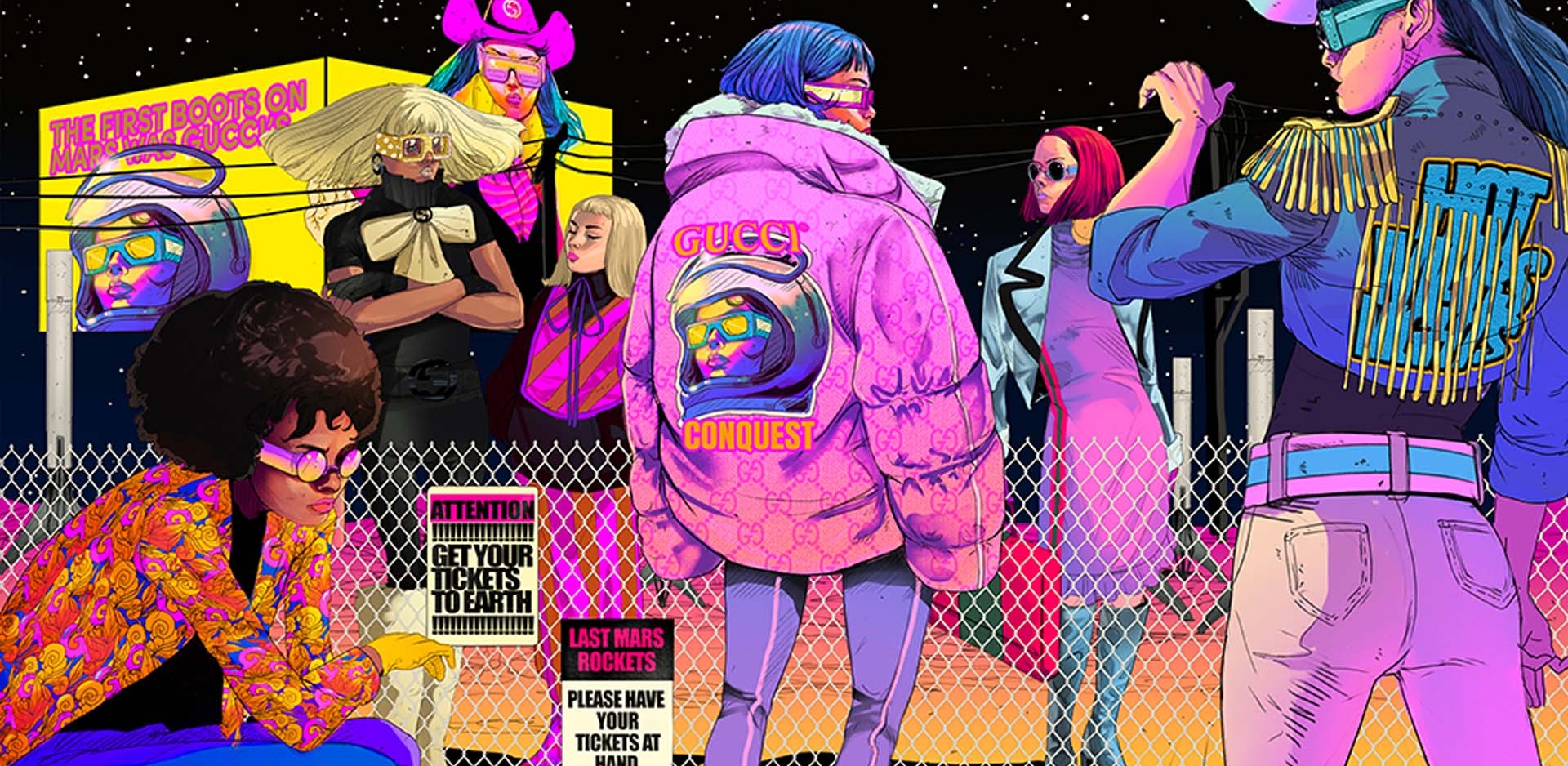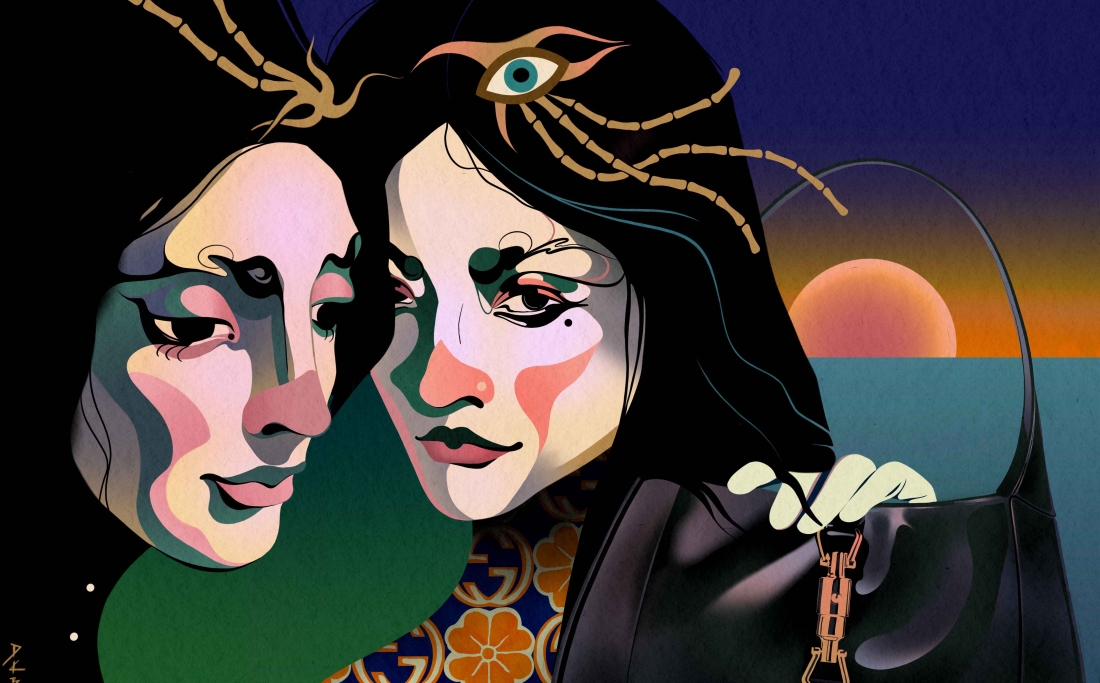From Luxury Fashion to Luxury NFTs: Gucci Can Do It All

What started as a branch for creative exploration within the Italian fashion house Gucci, is now seen as one of the most innovative spaces within fashion and luxury, inspiring brands within this industry and beyond. You guessed it, we’re talking about Vault, Gucci's experimental online space envisioned by its Creative Director Alessandro Michele. Together with its focus on restoring vintage pieces with love and care, Vault has expressed its true colors as a platform to experiment, innovate and celebrate emerging talent. One of its latest ventures? The Vault Art Space—and our FLUX.Monks helped bring the digital gallery to life.
In partnership with Vault, SuperRare and NiftyKit, we launched the Vault Art Space during NFT.NYC, thereby helping the luxury brand cement its Web3 credentials. It is a place where Gucci fans, art lovers and crypto-natives can bid on, mint and collect curated digital artworks that are available exclusively on this platform—making Gucci the first legacy brand in the world to own and manage its own digital art marketplace. In its first online exhibit and auction titled “The Next 100 Years of Gucci,” 29 carefully selected artists share their vision of the brand’s infinite horizons. Despite a crypto downturn just days before the launch, the Vault Art Space managed to attract Gucci connoisseurs and other Web3-savvy fashion fans far and wide, as the highest valued artworks were snapped up in a matter of days.


While Gucci was already one of the most active fashion brands in Web3, it has now truly demonstrated its literacy and legitimacy in this space, as well as its ability to move beyond the hype. When it comes to the next web, there’s an important chain of causation at play: culture, community and then commerce. Without your cultural credentials, consumers won’t take you seriously—and with the Vault Art Space, Gucci shows that it has understood the assignment. How so? Let’s lay out the evidence.
Without strategic direction, one might get lost on the road to success.
It’s safe to say that in terms of legacy brands, Gucci has been leading the charge for a while now. Having dabbled in NFTs and collectibles—and successfully so, as it was the first luxury brand to sell an NFT—it was high time to venture into new territory: the art space. What differentiates Gucci is that it’s truly alive to the real spirit of Web3. To Michele and his team of creatives, it’s not just a buzzword. Instead, they understand that this is the future of the internet, and so all their investments in this space are to future-proof their business. In other words, Gucci is in it for the long run.
To play the long-term game, you need an airtight strategy. This starts with why Gucci wanted to build their own digital art marketplace. In previous activations, the fashion brand leveraged existing communities and marketplaces, like Bored Ape Yacht Club through 10KTF and OpenSea, essentially Guccifying things that were already out there. However, the issue with this is that you lose control over the customer experience; product details may be stated on the webpage, but everything around it is typically commodified. Especially for a luxury brand, this is challenging. Therefore, Gucci made the conscious decision to leverage their own community and create their own marketplace, with the aim to regain control over their customer experience. This circles back to our point about the “culture, community and commerce” chain of causation—to all brands planning to follow suit, it’s absolutely critical to take this into account when treading into Web3.
The next era of the internet is all about culture and community-building. From day one, this has been at the heart of Gucci’s digital gallery initiative. As such, it’s only natural that Vault—a vehicle for novel brand partnerships and spotlighting upcoming talent—is the context within which Gucci is experimenting in the Web3 space. Vault is not only about creating cool, cultural stuff, but it’s also about learning what latches onto people and what tends to lose value. “It’s about building and playing in public, which is very true to the spirit of Web3,” says Sophie Dean, Associate Account Director.
Gucci knows that in one way or another this is going to be the future of everything they do as both a brand and a business, so bold moves like this are very much a learning exercise before they fold it into their broader business strategy.

When talking about the strategic foundation of this project, another main pillar is the question of how. We’ve already mentioned our FLUX.Monks joining forces with Vault, SuperRare and NiftyKit to bring this marketplace to life, but what about the content? Next to building the platform, we helped Gucci curate the selection of artists, which includes both cryptoart natives and more traditional creatives looking to experiment with digital platforms. Given this interesting mix of crypto-focused and “real-world” artists, it’s important to highlight the casting process.
This was a deliberate decision to make sure this project not only speaks to Gucci’s fluency in crypto, but also to the fact that it’s a legacy brand with a past and a future that’s able to bridge Web3 with the real world.

"That’s why we wanted to find a way to bring real-world artists into the crypto realm,” Dean says. Interestingly, this strategic decision reverberates another key element of Web3: its promise to facilitate mobility between URL and IRL.
Web3 is not a one-time gig, it’s a long-term game.
Moving beyond collectibles and one-off NFTs, Gucci’s Vault Art Space demonstrates that the brand is committed to Web3. In the end, the reality is that the digital art market in particular is a long-term play. You don’t enter this space if you want to make a quick buck, because the rules of the game in the NFT world are—unsurprisingly—very similar to the rules of the art market in the real-world; if there’s money to be made, it’s generally on the secondary market, not the initial sale. But what is beautiful about Web3 is that everyone gets remunerated for each subsequent sale on the secondary market, for eternity. In other words, if you truly want to make a difference in this space, it’s crucial to think about long-term strategies.
And that’s exactly what we did in collaboration with Gucci’s Vault: the luxury brand not only wanted to innovate with the speed of digital, but especially be able to control the customer experience, ensuring their cultural touch is at the heart of everything they create, and learn what it takes to own and manage their own digital art marketplace. “With this digital exhibition platform, they’re literally two years ahead of everybody else. This can’t be thought of as a singular project,” says Liam Osbourne, Global Client Partner, FLUX.Monks. “This is now going to be a Web3 platform for a multitude of endeavors—and we’re excited to continue to partner with Gucci on this initiative.”
Related
Thinking
Make our digital heart beat faster
Get our newsletter with inspiration on the latest trends, projects and much more.
Media.Monks needs the contact information you provide to us to contact you about our products and services. You may unsubscribe from these communications at any time. For information on how to unsubscribe, as well as our privacy practices and commitment to protecting your privacy, please review our Privacy Policy.



